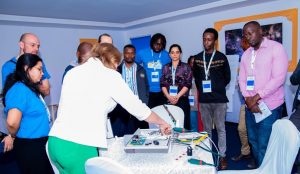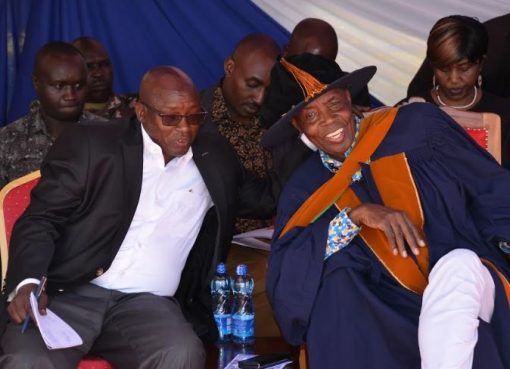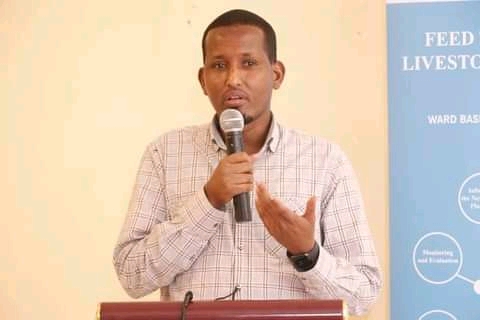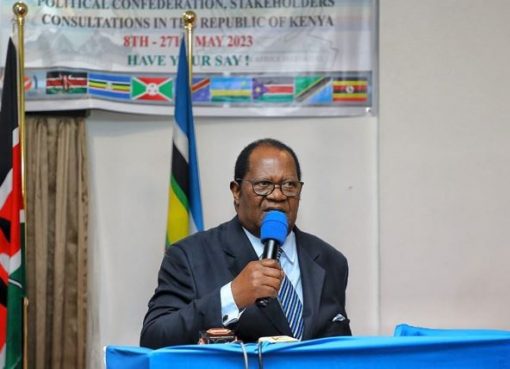The Open Source in Energy Access Symposium (OSEAS) 2025 has officially kicked off in Nairobi, bringing together technologists, policymakers, energy innovators, and local enterprises from around the world.
The Conference is geared towards accelerating the adoption of open-source solutions in the global effort to achieve universal energy access.
Speaking at the symposium, an Assistant Director of Renewable Energy, Ministry of Energy and Petroleum, George Nyang’ayo, said the government values the role of open-source platforms such as the Energy Access Explorer (EAE) that have supported national goals by offering an open-source geospatial platform integrating over 50 datasets relevant to energy access, social services, infrastructure, and productive uses.
Kenya launched the EAE in 2019, which has also supported the alignment with least-cost electrification efforts through integration with the Kenyan National Electrification Strategy, he added.
At the subnational level, Nyang’ayo said EAE has contributed to the development of three County Energy Plans—Makueni, Narok, and Kitui—and supported local decision-making through collaboration with the Clean Cooking Alliance (CCA) and the Clean Cooking Association of Kenya (CCAK) to bring in cooking-related data and use cases.

Nyang’ayo noted that the EAE, together with the platforms, democratises access to data and analytics, lowers planning costs, and enhances coordination across stakeholders.
“As we advance Kenya’s energy transition, we reaffirm our commitment to open innovation, capacity building, and tools that are inclusive by design,” he said.
Nyang’ayo called on stakeholders to continue working together to ensure that data, tools, and partnerships serve the communities who need them most.
Co-hosted by the EnAccess Foundation and the World Resources Institute (WRI), the OSEAS 2025 event builds on the momentum from the inaugural edition held in Abuja, Nigeria, in 2024, whose dialogue from experts aims at scaling practical, open, and locally driven energy innovations.
CEO of The EnAccess Foundation Vivien Barnier said that barriers to energy access weren’t just technological, but they are about collaboration.
“This symposium is where we move from talk to action, ensuring communities everywhere can build and adapt energy solutions that fit their needs,” he added
Tools such as the EAE are already supporting data-informed planning across Africa and also locally have been instrumental in developing the Makueni County Energy Plan and Investment Prospectus in Kenya, helping to identify priority areas for renewable energy investments in agriculture, health, and education.
Deputy Regional Director WRI Africa Rebekah Shirley said that energy is a catalyst and powers healthcare, enables learning, drives productivity, and builds climate resilience, and yet over 600 million people in Sub-Saharan Africa still live without access to electricity, and close to 1 billion people cook with harmful fuels.
“These are not just numbers. They represent families, communities, and futures held back by lack of opportunity. Bridging that gap is not only a moral imperative; it’s a development necessity,” she said.
“Energy is a catalyst. It powers healthcare, enables learning, drives productivity, and builds climate resilience. Yet over 600 million people in Sub-Saharan Africa still live without access to electricity, and close to 1 billion people cook with harmful fuels. These are not just numbers. They represent families, communities, and futures held back by lack of opportunity,” Shirley noted
Dimitrios Mentis, Lead of the Energy Access Explorer at WRI, said that open source is a powerful catalyst for accelerating inclusive energy access.
“By making data, tools, and technology widely available, we empower local actors to design energy solutions that directly respond to community needs,” he said
Throughout the symposium, participants will engage in hands-on demos, policy roundtables, and business model showcases that highlight how open tools improve transparency, lower costs, and support interoperability—helping energy developers and governments move away from closed, proprietary systems.
By Wangari Ndirangu





